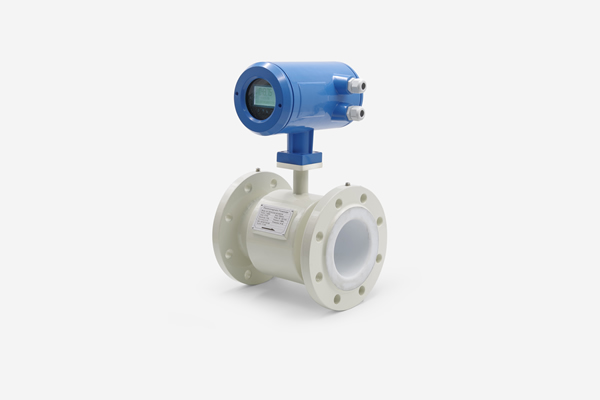
WORKING PRINCIPLE
The electromagnetic flowmeter operates on the principle of Faraday’s Law of Electromagnetic Induction, which states that when a conductive fluid passes through a magnetic field, a voltage is induced perpendicular to both the flow direction and the magnetic field. This voltage is directly proportional to the flow velocity, allowing the meter to calculate the volumetric flow rate of the liquid.
BRIEF INTRODUCTION
An electromagnetic flowmeter, also known as a magmeter, measures the flow of electrically conductive liquids by detecting the voltage generated as the fluid moves through a magnetic field. The flow tube is equipped with a magnetic field, and as the conductive liquid flows through it, an electrical signal is induced and picked up by electrodes. This signal correlates with the flow velocity.
This technology requires the fluid to have electrical conductivity, such as water with dissolved ions, and the internal surface of the pipe must be non-conductive, typically lined with materials like rubber or PTFE to ensure accurate measurement.
ADVANTAGES
Flexible Installation Options: Available in various connection types including flange, wafer, threaded, tri-clamp, and insertion styles to suit different application needs.
High Turn-Down Ratio: Offers a wide measurement range with turn-down ratios up to 1500:1, ensuring accuracy across various flow conditions.
Compliance with Multiple Standards: Compatible with global connection standards such as GB, DIN, ANSI, and JIS.
Versatile Liner Materials: Choose from a variety of liner options including hard rubber, PTFE, polyurethane, PFA (vacuum-resistant with metal mesh), and Tefzel (also vacuum-resistant with metal mesh) to match your media and process requirements.
Diverse Electrode Materials: Electrode options include 316L stainless steel, Hastelloy-C22, Hastelloy-B10, titanium, tantalum, platinum/iridium alloy, and stainless steel coated with tungsten carbide, ensuring chemical resistance and durability.
Detachable Electrode Design: Enables easy maintenance and electrode replacement without interrupting the process (online service capability).
High Protection Ratings: Available with protection classes IP65, IP67, and IP68 for operation in harsh and submerged environments.
Remote Converter Options: Supports remote display and control, with options for wall or column-mounted installation—ideal for hard-to-access or hazardous areas.
User-Friendly Programming:
On-device button-based configuration.
Infrared remote control for contactless setup, especially useful in explosion-proof zones.
Bus-based remote programming for convenient instrument configuration and monitoring.
Flexible Output & Input Signals: Supports analog current, frequency, and pulse outputs for integration with various control systems.
Comprehensive Alarm Functions: Includes built-in self-check features for conditions like empty pipe, excitation failure, and flow rate limit alarms (high/low).
Advanced Communication Protocols: Interfaces include RS232, RS485, HART, and Profibus-DP for seamless integration with modern industrial networks.
Explosion-Proof Certified: Suitable for hazardous environments, compliant with Ex d ib MB IIBT4
